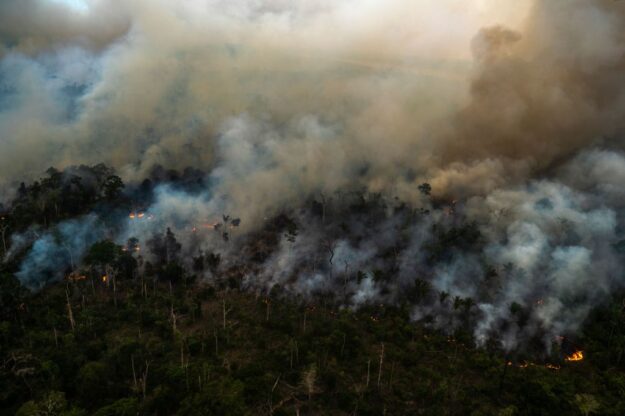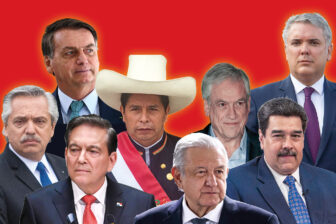The U.N.’s COP26 climate conference in Glasgow ended on Saturday, without a deadline to phase out coal but with an important agreement on the regulation of carbon markets. For Brazil and Latin America, what’s in the agreement on carbon markets is just as important as what was left out.
Setting rules for a global carbon market will allow countries that can reduce their emissions beyond their national determined contributions (NDCs) in 2015’s Paris Agreement to help out countries that can’t afford to reach their own NDCs. Under Article 6, the part of the COP26 agreement that deals with carbon trading, this trade can happen through government-to-government deals or among private and public parties in different countries, with corresponding adjustments in the NDC accounts.
A big issue with Article 6 is that countries can authorize the sale of credits only if they have reduced their emissions beyond the goals set in their NDCs. This may not be easy to verify because NDCs are not fully comparable in either their scope or their timeframe, and they imply arbitrary starting points. Another big issue is establishing what activities or sectors in a country can generate carbon credits.
The COP26 statement left forest preservation projects (REDD+) out of official carbon markets and was mostly silent about credits from land-use and land-cover changes (LULCC). That could reduce the incentives for forest preservation for countries that already have a clean energy matrix — and has a strong bearing on how important regulated carbon markets will be to countries like Brazil.
Studies have shown, for instance, that some Asian countries were cautious when setting their NDCs, which could point to increases in emissions by 2030 and beyond. If South and Southeast Asian countries instead achieve substantial “excess reductions” in their emissions relative to their promises by phasing out coal, an Article 6 fossil fuel–based market could result in these countries becoming very large sellers of carbon credits. But if LULCC credits were integrated in the market, on the other hand, countries such as Brazil and Colombia could become big sellers of carbon credits, probably at lower cost than Asia, at least in the first stage.
The land-use credit issue raises an important question: How permanent does CO2 emission avoidance need to be for policy purposes? Storing carbon in trees or in the soil, of course, is temporary. The only permanent method of storage is by solidifying carbon underground. But doing so with industrial methods is not yet scalable and is itself extremely energy intensive and expensive. Reversing deforestation, slashing emissions from agriculture and restoring ecosystems across the world, on the other hand, can trap carbon immediately and at low cost, while bringing additional benefits for rural communities and promoting biodiversity.
Many environmental scientists believe that it is more valuable to trap a unit of carbon today than tomorrow, even if there is a chance the unit will be eventually released — but this fact is not fully recognized in the U.N. accounting systems. Postponing global warming by acting today avoids irreversible environmental changes and gives time to find permanent storage methods and solutions for sectors that are hard to decarbonize. That is why nature-based solutions that can remove carbon from the air now, even if temporarily, should be supported.
In parallel with the discussions on Article 6, unregulated carbon markets have emerged as companies seek to reduce their net carbon footprint. Initiatives such as the Lowering Emissions by Accelerating Forest Finance (LEAF) Coalition are important examples of the potential of unregulated carbon markets in promoting nature-based solutions to reducing CO2 amounts in the atmosphere. But regulated markets are likely to involve much larger resources. LEAF aims to put $1 billion in play, while a regulated global market — especially if it grants access to regional markets such as the European Trade System — could mobilize dozens of billions of dollars and finance tremendous changes in forest protection and regeneration. In all cases, integrity will be the key to success, ensuring that projects deliver real savings and are not used for “greenwashing,” or otherwise fail to protect our forests or the communities that live in them.
Beyond helping Brazil protect the Amazon, a healthy global carbon market would create great opportunities for commercial and investment partners that could join the country in helping accelerate its journey to become a net zero economy before 2050, reducing the global stock of carbon in the air. Though Brazilian NDCs are ambitious, the country could further reduce deforestation and methane emissions if LULCC carbon credits help promote forest regeneration and expand existing low carbon agriculture programs, including by storing carbon in the soil. Technological opportunities abound, from measuring carbon removal to shortening the beef production cycle and restoring degraded land.
World recognition of CO2 avoidance yielded by biofuels could foster their use in electric cars, since ethanol can be a cheap and easy-to-handle source of hydrogen to power fuel cells. Several players in the global auto industry are already investing to improve existing technology, and carbon credits could help bringing a new generation of cars to the market sooner.
Brazil can reduce emissions from the electricity sector beyond the indications in our 2015 NDC faster if the CO2 emissions avoided by expanding wind and solar generation are recognized in international markets. These credits can help advanced economies to deliver on their NDCs by taking advantage of lower fossil fuel emissions in Brazil and by promoting a global trade of green hydrogen produced from renewable sources in Brazil and used as clean energy at home.
There are rich opportunities in both regulated and unregulated carbon markets, as the benefits of halting deforestation and fossil fuel emissions become ever more evident. That process will accelerate next year in Brazil, as the country discusses the creation of a domestic carbon market and focuses on ensuring that the rules governing U.N.-sponsored global markets, regional regulated markets and global unregulated markets effectively support nature-based solutions as part of global efforts to stop human-caused climate change.







